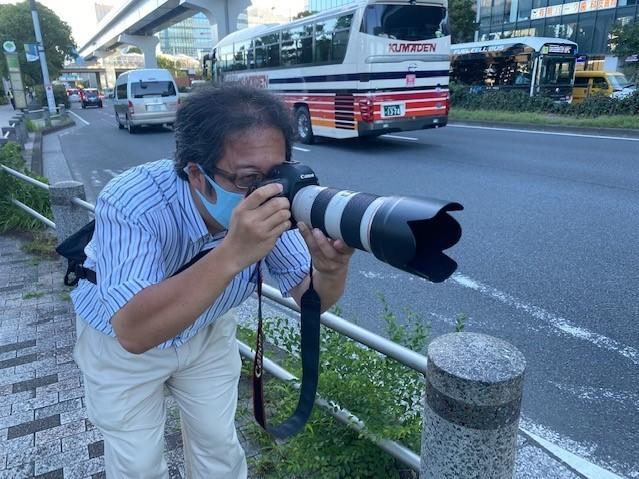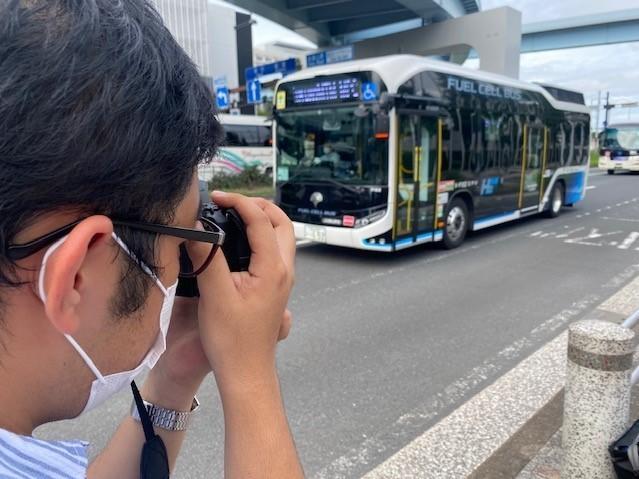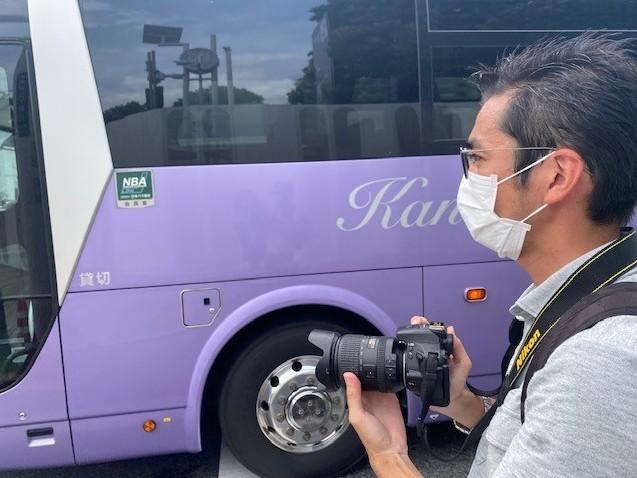Section Branding
Header Content
A Different Tokyo Olympic Sport: Bus Spotting
Primary Content
TOKYO — Outside the Tokyo 2020 media press center and Olympic venues, amateur photographers are snapping pictures. Not of the people, but the hundreds of buses shuttling foreign journalists, athletes and officials.
You can spot the bus spotters snapping shots of the vehicles labeled with funny names in English, like "Ina Bus," and "Hiya, Tokyo." Lots of them are labeled with the Japanese word "kanko," meaning sightseeing.
Yuki Sato spends hours on one street corner, taking pictures of all the buses that pass him. Why? I ask.
"Hobby, hobby," he says. It's his hobby.
Bus spotting is like train spotting. Not the 1996 movie Trainspotting, which is about heroin addicts in Edinburgh, Scotland. But bus spotting: Enthusiasts who like to photograph the buses. It's a popular past time in Hong Kong, Singapore and other parts of the world too.
"It's not normal. Not normal at all," says Tomo Fukuda, a travel adviser working at Tokyo 2020's tourism office at the Olympics. She says not only is it not normal, she has another name for these photographers: "Some of them are ... how do you say, geek? They are bus geeks."
Fukuda says while Tokyo remains in a state of emergency over the coronavirus pandemic, tourism is not permitted. She says the sightseeing buses are now strictly devoted to the Olympics.
"We are curious about your media people's behavior, taking the shuttle buses to your hotel or Olympic venues or competition venues. You are not allowed to walk around freely. Right. So that's why, you know, you need to you must use unit and shuttle services."
Another bus spotter is university student Jun Yasazaki, who says he's been bus spotting every day for the past four years. I find him sweating in the hot sun taking shots he then posts on Twitter and Instagram.
Yasazaki like the buses with colorful signs on the sides ... especially the "Toie" buses, green and orange. "Toie bus is my favorite bus service," he says. "It looks cool."
Down the street from him is Ryotaro Mori, who says he's been bus spotting for 30 years, since he was 12 years old. When he's not working as a commercial photographer, he leaves his wife and two young children at home to snap the buses with his 70- 200 millimeter lens.
He figures he takes about a thousand or two thousand photos of the buses every day. He just saves them on his computer, which has a big hard drive. He says he doesn't really even look at the photos afterwards. He just like shooting the buses that whoosh by.
I ask if he ever rides any of these buses, or if he's at all curious about anyone on them, like the Olympic athletes. Not really, he says.
"My Olympics is taking bus pictures," he says.
Copyright 2021 NPR. To see more, visit https://www.npr.org.



